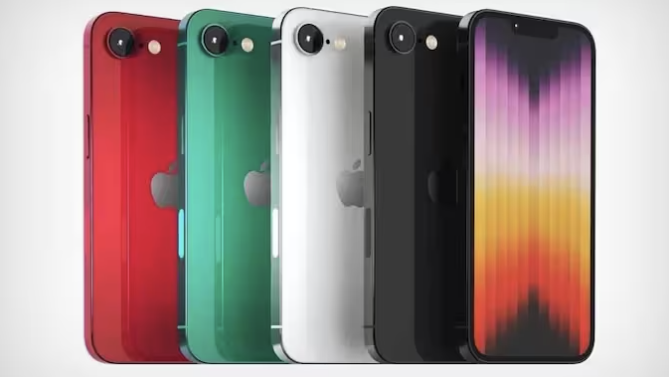
The world of insurance is changing rapidly. In 2025, technology will no longer just be an accessory to the industry; it will be at its core, driving innovation, personalization, and accessibility. From AI-powered underwriting to telematics-based car insurance, the future of coverage will be faster, smarter, and more tailored to individual needs than ever before.
In this blog post, we’ll explore how technological advancements are revolutionizing the insurance industry, making it more customer-centric, efficient, and cost-effective. We’ll dive into the role of artificial intelligence (AI), the Internet of Things (IoT), blockchain, and other game-changing technologies in transforming how policies are created, sold, and maintained.
Table of Contents
ToggleThe Digital Transformation of Insurance
Insurance, traditionally seen as a paperwork-heavy, slow-moving industry, is undergoing a digital transformation. This change is driven by the increasing demand for faster services, personalized experiences, and improved efficiency. In fact, a report by McKinsey & Company states that 85% of insurance executives are already investing in digital technologies to transform their businesses.
1. Artificial Intelligence: Streamlining Processes and Enhancing Customer Experience
Artificial Intelligence (AI) is perhaps the most significant technological force shaping the future of insurance. AI is already being used to automate underwriting, claims processing, fraud detection, and customer service. But in 2025, AI will go further by offering more personalized services and better risk assessments.
Personalized Policies and Pricing
AI’s ability to analyze large volumes of data allows insurance providers to create more personalized policies. By leveraging data from social media, wearables, and even driving habits, insurers can offer tailored plans that reflect individual behavior and preferences. For example, Lemonade, an innovative insurance company, uses AI-powered chatbots to handle claims and offer personalized quotes, dramatically improving customer experience.
Improved Claims Processing
In the future, AI will drastically reduce the time it takes to process claims. Today, it may take weeks for an insurance claim to be reviewed and paid out. By 2025, AI will allow claims to be processed in real-time, using data such as photographs or videos of damages, and determining claim amounts almost instantly.
2. The Internet of Things (IoT): Smarter Coverage
The Internet of Things (IoT) is connecting more and more devices to the internet, and this connectivity is changing how insurance providers assess risk and offer coverage. By 2025, the use of IoT devices, such as smart home technology, wearable fitness trackers, and connected cars, will be a standard part of insurance policies.
Smart Homes and Home Insurance
IoT-powered smart home devices like smart thermostats, security cameras, and leak detectors will help insurers assess risk more accurately and lower premiums for policyholders. For example, a homeowner with a smart smoke detector that automatically contacts emergency services in case of fire may qualify for lower premiums, as the risk of extensive damage is reduced.
Connected Cars and Auto Insurance
In the auto insurance sector, IoT devices, such as telematics, will allow insurers to offer pay-per-mile or usage-based insurance. Telematics-enabled vehicles will monitor driving habits like speed, braking patterns, and distance traveled, providing insurers with real-time data. This will allow for customized premiums based on actual driving behavior rather than demographic information, making auto insurance more fair and affordable.
3. Blockchain: Revolutionizing Transparency and Fraud Prevention
Blockchain, the technology behind cryptocurrencies like Bitcoin, is making its way into the insurance industry. By providing a decentralized and immutable ledger, blockchain offers new levels of transparency and security, particularly in areas like claims processing and fraud prevention.
Enhanced Fraud Detection
Insurance fraud costs the industry billions of dollars annually. Blockchain can help reduce fraud by making it easier to track claims history and verify the authenticity of documents. With blockchain, every transaction related to an insurance policy can be securely recorded, ensuring that fraudulent claims are easier to spot and prevent.
Smart Contracts
Blockchain also facilitates the use of smart contracts—self-executing contracts with the terms directly written into code. For example, in travel insurance, a smart contract could automatically trigger a payout if a flight is delayed beyond a certain time. These contracts eliminate the need for intermediaries, speeding up the claims process and reducing costs.
4. Virtual and Augmented Reality (VR/AR): Transforming Customer Interaction
In the near future, Virtual Reality (VR) and Augmented Reality (AR) could change how customers interact with insurance companies, making the process more engaging and informative. By 2025, these technologies could offer virtual policy demos, risk simulations, and interactive claims processes.
Virtual Risk Assessments
For instance, a property insurer might use VR to conduct a remote assessment of a home’s risk factors. Rather than sending an adjuster to the location, the homeowner could use a VR headset to give the insurer a real-time view of the property. This would save time and reduce costs for both the insurer and the customer.
Enhanced Claims Reporting
When it comes to filing claims, AR could allow customers to report damages by simply scanning their environment. AR could overlay repair instructions on top of damaged property, helping adjusters assess the situation without a physical visit.
5. Big Data and Predictive Analytics: Enhancing Risk Management
Big data and predictive analytics are powerful tools for improving risk management and providing more accurate pricing for insurance policies. By 2025, insurers will use these tools to predict future risks with greater accuracy, which will help them offer more tailored policies and prevent claims before they occur.
Predictive Pricing
Insurers will be able to analyze vast amounts of data to predict future events that could lead to claims. For example, weather patterns, lifestyle choices, and economic conditions could all be factored into pricing models. If an insurer can predict that a customer’s home is at a higher risk of flooding due to upcoming weather conditions, they can offer flood insurance coverage at a more appropriate price.
Risk Prevention
Beyond pricing, predictive analytics will help insurers and policyholders take proactive steps to reduce risk. For example, a health insurer might use data from fitness trackers to offer wellness programs that help policyholders stay healthier and lower their premiums.
The Benefits of Tech-Driven Insurance in 2025
As we look towards 2025, it’s clear that technology will provide numerous benefits to both insurance providers and their customers. Here are just a few of the key advantages:
1. Faster Service
With AI, automation, and telematics, insurance companies will be able to process claims faster and provide immediate responses to customer inquiries.
2. Personalized Plans
By leveraging data from IoT devices, insurers will be able to offer customized policies that fit each customer’s unique lifestyle, behavior, and needs.
3. Lower Costs
As technology streamlines operations and reduces fraud, insurance providers will be able to offer lower premiums to their customers. Additionally, new technologies will help prevent costly risks, further driving down overall costs.
4. Increased Transparency
Blockchain technology will ensure that policies, claims, and payouts are transparent and tamper-proof, giving customers greater trust in their insurance providers.
Challenges and Considerations
While the benefits are clear, there are also challenges associated with the increasing reliance on technology in the insurance industry.
1. Data Privacy Concerns
As more personal data is collected through IoT devices and AI, insurance companies must ensure that they adhere to strict data privacy regulations and protect customers’ sensitive information.
2. Technology Accessibility
Not all customers have access to the latest technologies, particularly in rural or underserved areas. Insurance companies will need to find ways to ensure that these advancements are accessible to all.
3. Regulatory Challenges
As new technologies enter the insurance space, regulators will need to create frameworks that ensure customer protection and fairness. This will require cooperation between insurers, technology providers, and government agencies.
Conclusion: A Smarter Future for Insurance
In 2025, insurance will no longer be a one-size-fits-all solution. Thanks to technological advancements, customers will be able to access more personalized, efficient, and affordable coverage. From AI and blockchain to IoT and predictive analytics, the future of insurance is more data-driven, transparent, and customer-focused than ever before.
However, as we embrace these changes, it’s essential for the industry to balance innovation with ethical considerations, ensuring that all customers have access to these technologies while safeguarding their personal information.
As we move toward 2025 and beyond, the future of insurance is bright, smart, and exciting. Whether you’re a policyholder or an industry professional, the tech-driven revolution in insurance is one to watch.





2 thoughts on “How Technology is Shaping Insurance in 2025”